Two Minute review
The Samsung Q60T QLED occupies an important spot in Samsung’s TV 2020 lineup, being the cheapest of the brand’s QLED sets – and therefore, effectively, the worst best Samsung TV has released this year.
The main draw here is the price, with the Q60T starting at just $529 / £599 for the smallest 43-inch size (or AU$1,495 for a 55-inch model – you’ll find a full breakdown of the screen size/price options below). That’s a fraction of the cost of Samsung’s Q95T 4K QLED or flagship Q950TS 8K, and will no doubt ensure that the Q60T finds its way into more homes than its premium siblings.
But that draw necessarily comes with drawbacks. You’re getting a drop in processing power compared to last year’s Q60R, with a Quantum Processor Lite chip instead of the Quantum Processor 4K used in most QLED models. Edge lighting, too – a lighting system that illuminates the picture from the sides rather than behind the panel – is a cheap way to light up a set’s images, but means there are issues with consistency of brightness, off-axis viewing, and the strength of HDR objects.
This isn’t a true HDR set, then, and you’re also going to have to swallow some mild motion blur in exchange for the Q60T’s low price.
Upscaling HD pictures to 4K is a strength of Samsung’s, though, and HD images are free of distasteful video noise, even if Samsung’s processing can lead to a slightly flat picture in order to achieve this.
Audio can be pretty muddy, too – though an Amplify sound mode for accentuating dialogue helps matters, as does eARC (enhanced audio return channel) compatibility for lossless audio passthrough to external audio hardware. If you have a soundbar or surround-sound setup to plug the Q60T into, you won’t have a problem with the sound.
Samsung is a TV brand that tends to hit minimum bars on all metrics, and the Q60T is a good example of a set with compromises across the board, but which still meets a benchmark for acceptable watching. And for the price, that’s not a bad sell.
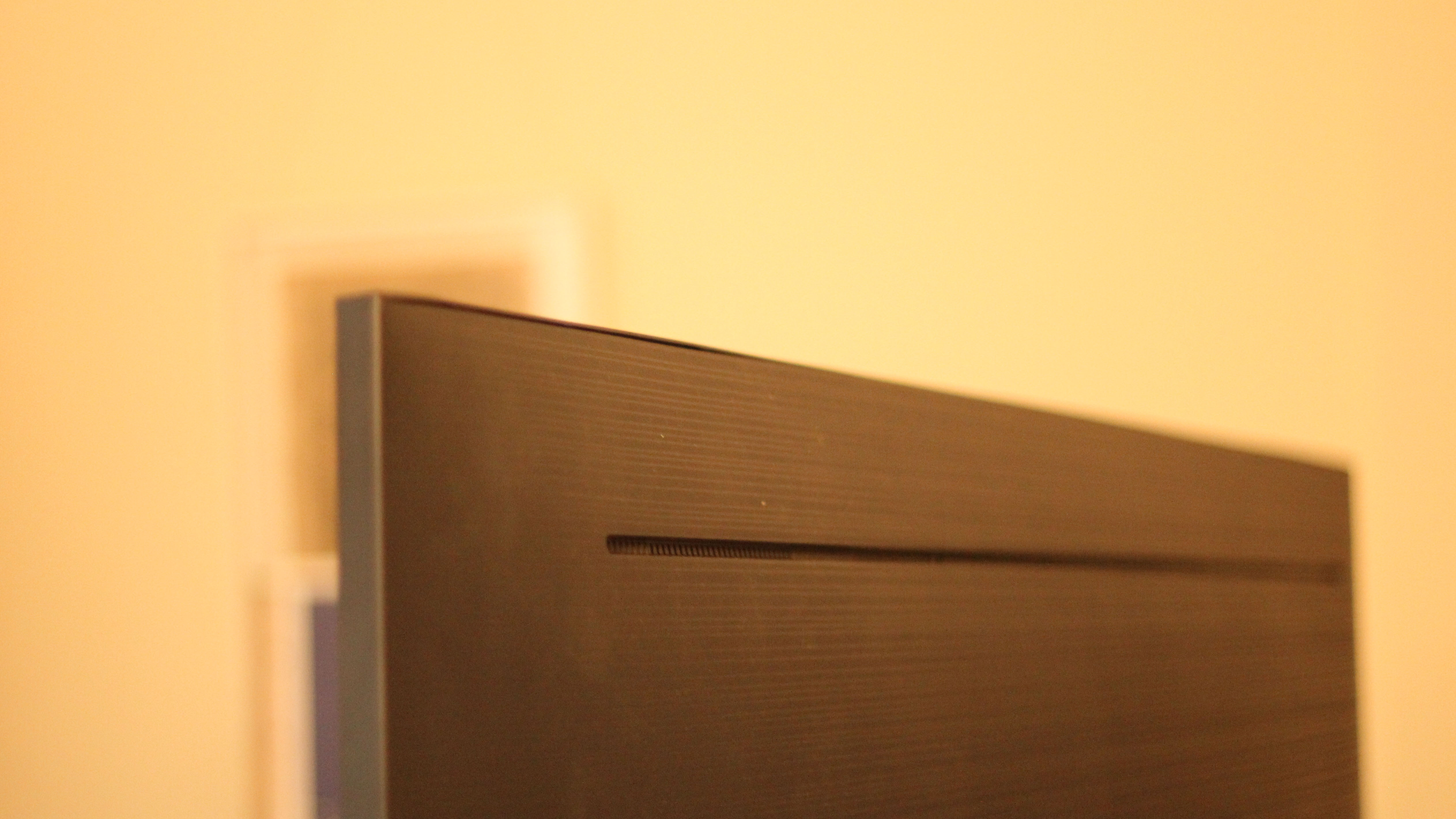
Price and availability
The Q60T QLED starts at $529 / £599 for a 43-inch size, going up to $649 / £699 for the 50-inch, $699 / £899 for the 55-inch, $799 / £999 for the 58-inch, $949 / £1,199 for the 65-inch, $1,499 / £1,699 for the 75-inch, and $2,199 / £2,199 for the massive 85-inch model.
If you’re shopping from Australia, you can get a 55-inch model for AU$1,495, a 65-inch model for AU$1,895, or a 75-inch model for AU$2,895.
There’s a generous mix of sizing options, then, and a good mix of price points. There’s also a Q65T variant, which has silver coloring rather than the Q60T’s standard black finish, but that’s the only difference.
Design
- HDMI 2.1 and eARC support
- 60Hz panel only
- Easy assembly
The Samsung Q60T offers a pretty standard design, with black plastic casing, a thin bezel, and an elegantly curved rear. It’s similar in appearance to Samsung’s 7000 or 8000 series, which is apt given that the Q60 is a transitional set between Samsung’s LED and QLED ranges.
The back of the set contains a good selection of ports, including two USB inputs, satellite, AIR/CABLE, and ethernet. There are three HDMI inputs, though only two are within easy reach of the sides of the set; the third will be entirely out of reach if the TV is wall-mounted, which is something to consider if you’ll need access to all three.
One of these is an HDMI 2.1 port, too, although it’s not overly useful in this specific set.

HDMI 2.1 is a cable standard that enables 4K/120Hz and 8K/60Hz video passthrough, but given that the Q60T is a 4K TV with a 60Hz panel, neither of those capabilities applies here. You are getting eARC support, though.
The Q60T is mounted on two feet – rather than a central stand, which are very easy to insert, without even a need for screws.!
As is the custom for Samsung QLEDs, you get two remotes: one standard rubber-button affair with a full numerical keypad, and a slimmed-down version with just the major buttons. Note that you will get dedicated buttons for Netflix, Amazon Prime Video, and Rakuten TV on both models.
The sleeker remote appears to be made of lower-grade materials than the remotes on some other QLEDs, though, with a cheap-feeling plastic casing. The IR sensor also isn’t as responsive as we’d hope, with an occasional delay in the TV tracking inputs and a narrow directional beam – meaning you need to point the remote at the set pretty much head-on.
The Q60T isn't overly heavy, even at the 65-inch size reviewed here (22.6kg), although all models but the smallest 43-inch size will probably need two people to lift them safely.
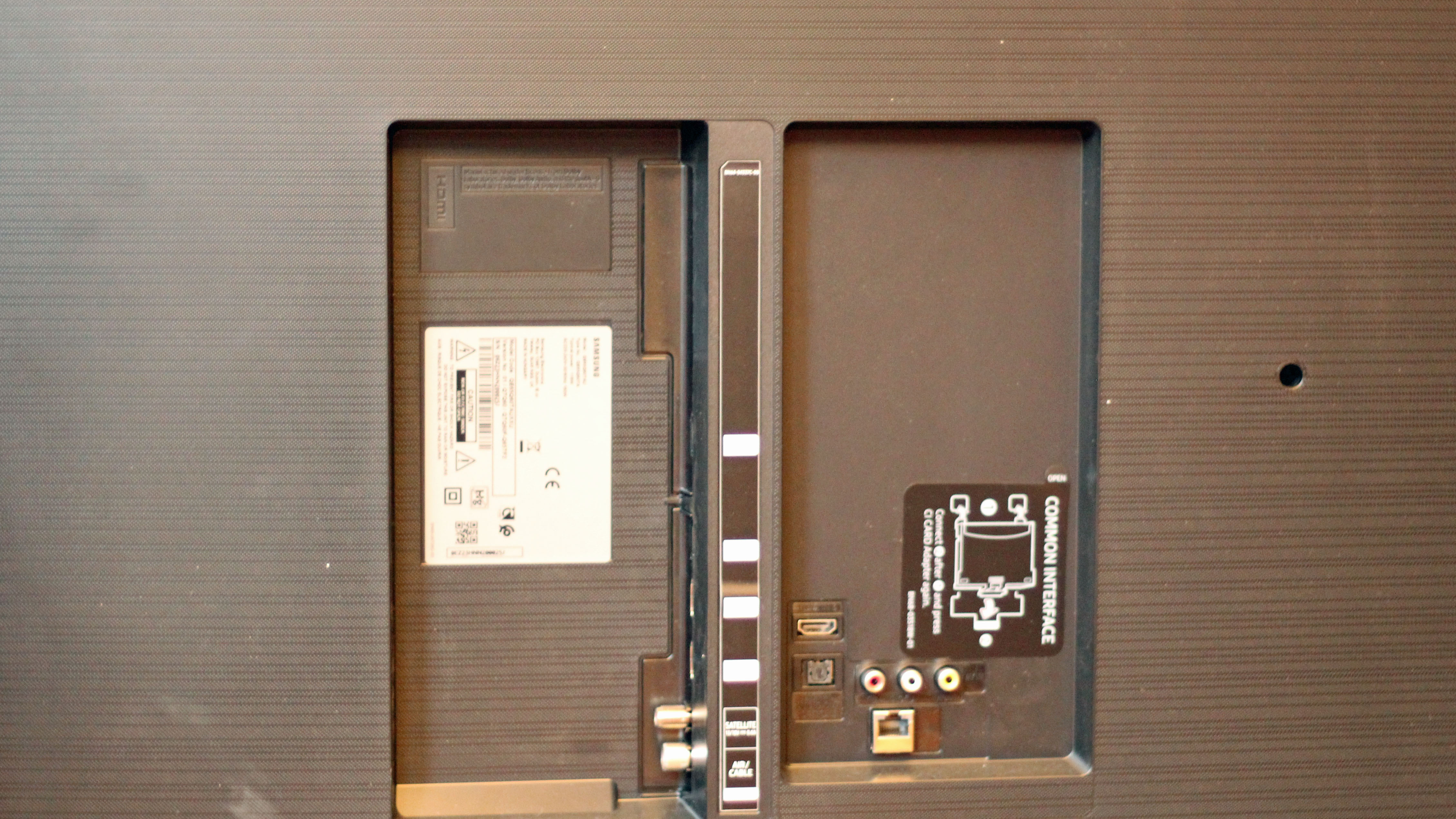
Smart TV (OS)
- Slick and comprehensive smart platform
- Disney Plus included
- Choice of Alexa or Bixby voice assistants
Samsung’s Tizen OS makes a proud return on its 2020 sets, offering a sleek and largely well-organized interface.
Tizen is similar to webOS in that it displays an overlay of horizontally-arranged app icons when you hit the home button, with key apps like Netflix and Amazon listed first, before the likes of YouTube or web browser applications. When you hook up a games console, too, Tizen will register the hardware (i.e. Xbox, PlayStation) with its own dedicated icon that you can place wherever you like in this row.
We found that we preferred to turn off HDMI-CEC in the TV’s external hardware settings, as this automatically turns on connected games consoles when the TV comes on, but it may be a useful function for some.
Tizen has brilliant app support, too, All the major players here, with Netflix, Amazon, Apple TV Plus, and even Disney Plus on show (unlike Panasonic’s My Home Screen OS, which is still missing the Disney app).
Disney Plus doesn’t come built-in, however, so you’ll need to head to Samsung’s app store to download it separately, and then head to the home bar to place it where you wish. It’s not a very straightforward process, but if you don’t see Disney Plus at startup, don’t worry – it’s very much available.
Samsung has snuck some small ads into its home row, although these are only ever for linked services like Disney Plus, Samsung TV Plus, or Alexa. It’s possibly a slippery slope, though – and having any ads on the user interface of paid hardware is a bit of a slap in the face.
While the interface is largely clean, scrolling down will show you the Samsung TV Plus section, which can feel a bit cluttered, with some rows offering free content and some offering available paid-for content from other streaming apps. That said, it’s worth checking it out to see what you can get for free, especially if you’re looking for kids TV or sports channels.
New Samsung TVs also support AirPlay 2 for easy casting from Apple devices, and you can select either Amazon Alexa or Bixby as an AI assistant for voice navigation. Alexa is generally smarter, but Samsung has a comprehensive list of Bixby voice commands in the settings for those wishing to look for it.
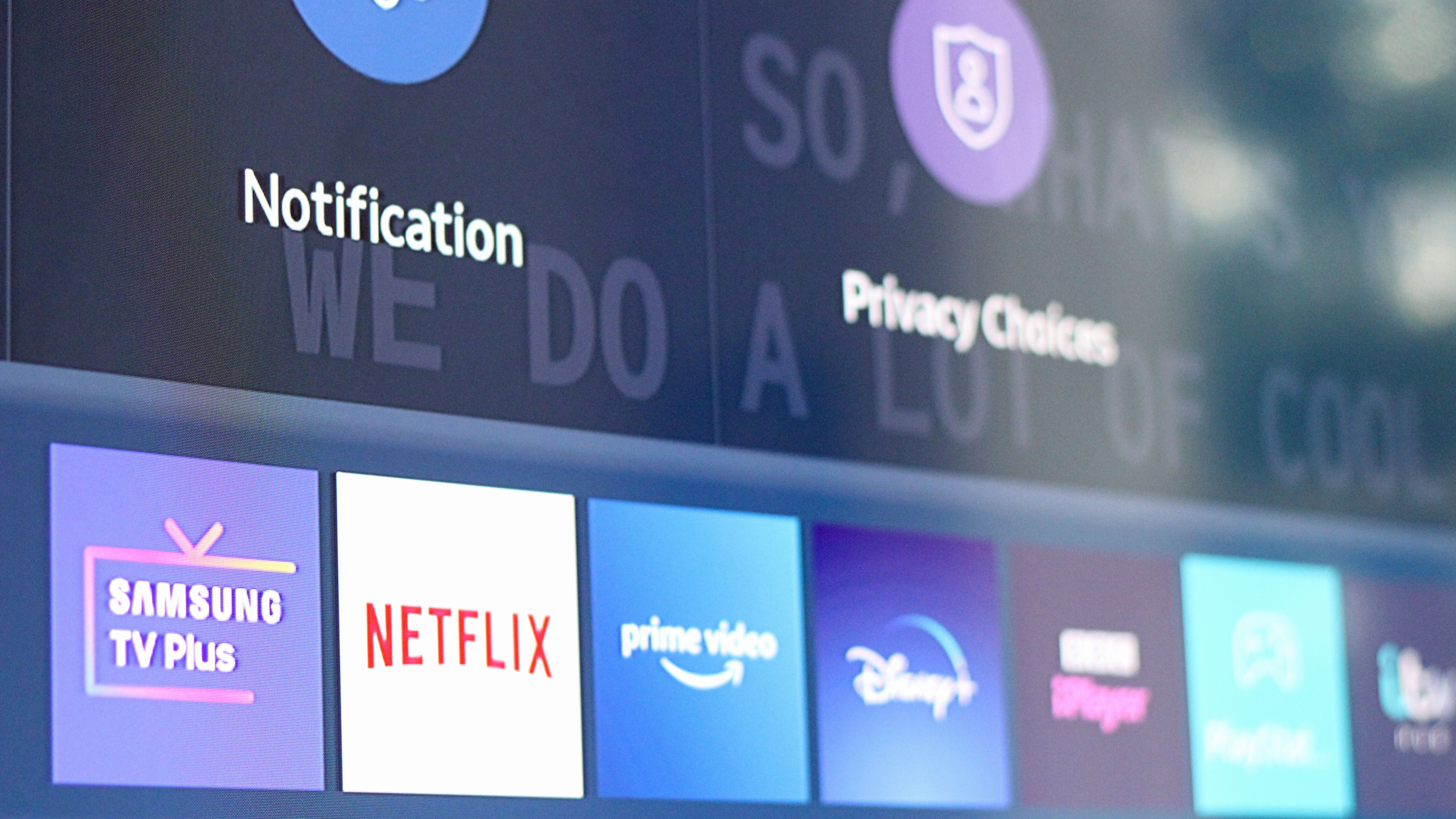
Picture quality
- Edge lighting
- Mild motion blur
- Not bright enough for true HDR
The main difference you’ll find from last year’s Q60R is in the processor. While the Q60R had a Quantum Processor 4K, the Q60T features a Quantum Processor Lite.
That’s because Samsung has shuffled its 2020 TV range, saving the best performance for its 8K TV models and pushing the 4K TVs down to the bottom of the pecking order.
What does this mean materially for the Q60T? Not that much. You’re still getting great upscaling from HD, even on the Q60T’s larger screen sizes (like the 65-inch mode reviewed here). Watching the US sitcom Community, the HD footage looked suitably detailed on the Q60T’s 4K panel. HD content isn’t indistinguishable from native 4K, and there’s a slightly ‘flat’ effect with HD images that comes from the process Samsung uses to smooth over video noise, but these aren’t so noticeable as to ruin the viewing experience.
You’re also getting Samsung’s Wide Viewing Angle technology, which launched in 2019 on its higher-end sets, and has since trickled down to more affordable QLEDs. This ensures that images still largely hold up in terms of color and contrast when viewed from the side – although the edge lighting here means images aren’t lit consistently in all directions, and we found that a 45-degree angle still wasn’t ideal.
The Q60T’s panel does seem to be heavy on blue light, with blues and greens tending to come out stronger (and more accurately) than reds or browns. When we reviewed Samsung’s The Frame (2020) earlier in the year, we found that this tended to cause darker skin tones to take on a reddish tint, and this is also the case on the Q60T.
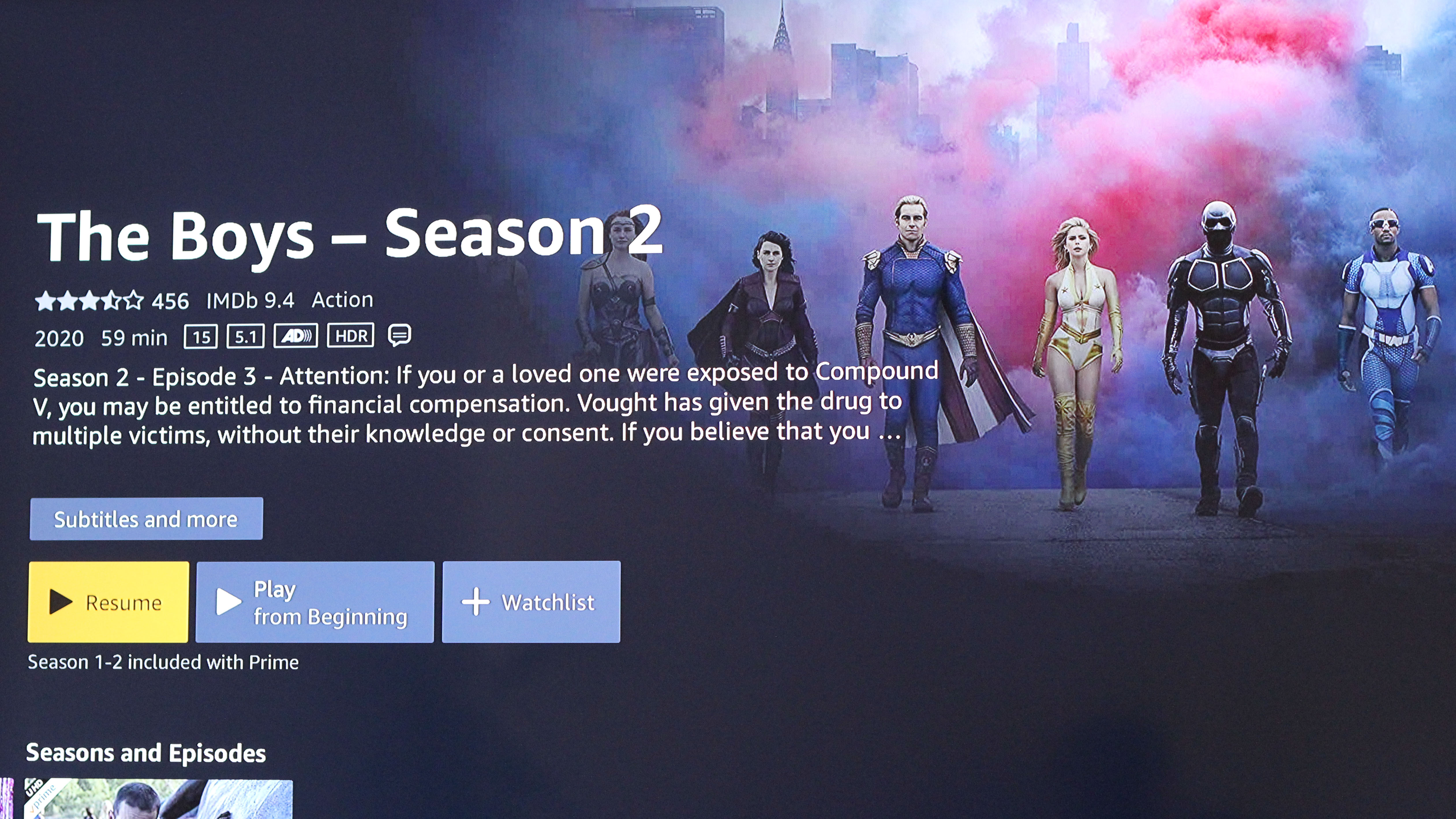
When making the move to native 4K/HDR, things certainly get more exciting. There’s a noticeable increase in the range of colors available, though there’s still a kind of flatness to the picture, with individual objects or areas lacking the brightness needed to make them stand out from the rest of the image.
Ang Lee’s Life of Pi (4K Blu-ray) proved a great choice for the Q60T, with the set’s panel able to vividly show the bright blues of the Piscine Molitor swimming pool, and the comparative lightness of the film’s earlier scenes. The skin tone issue is apparent here, though, with Irrfan Khan’s face seeming to match the color of the wooden cabinets in his kitchen.
Some motion blur is apparent here, too. Images of a monkey moving through branches, or schoolchildren shoving each other in a playground, looked a bit messy visually, with frames appearing to merge slightly as the processor tried to track fast-moving objects. Even a man crouching down at the edge of a swimming pool showed a small hint of judder – and while Samsung’s Quantum Processor Lite manages to keep a handle on these issues, and stop them being as problematic as on the Hisense U8QF, they are noticeable, and detract from the experience.
HDR colors are subdued, likely due to the mid-range processor and edge-lighting. Greys and browns tend to merge with similar tones, without much nuance, which is a shame in colorful films such as Life of Pi.
Watching Netflix’s High Score gaming documentary (in 4K/HDR) shows the Q60T at its best, thanks to the doc’s mix of static interviews (i.e. not much motion) and bright animations. However, the fact that the Q60T only comes into its own with such a specific range of content only serves to highlight its shortcomings elsewhere.
For better HDR performance, you’ll want at least 1,000 nits, if not more – but the Q60T doesn’t get near that benchmark. For a truly bright HDR set, you should consider upgrading to the Q80T (900 nits) or Q95T (2,000 nits).
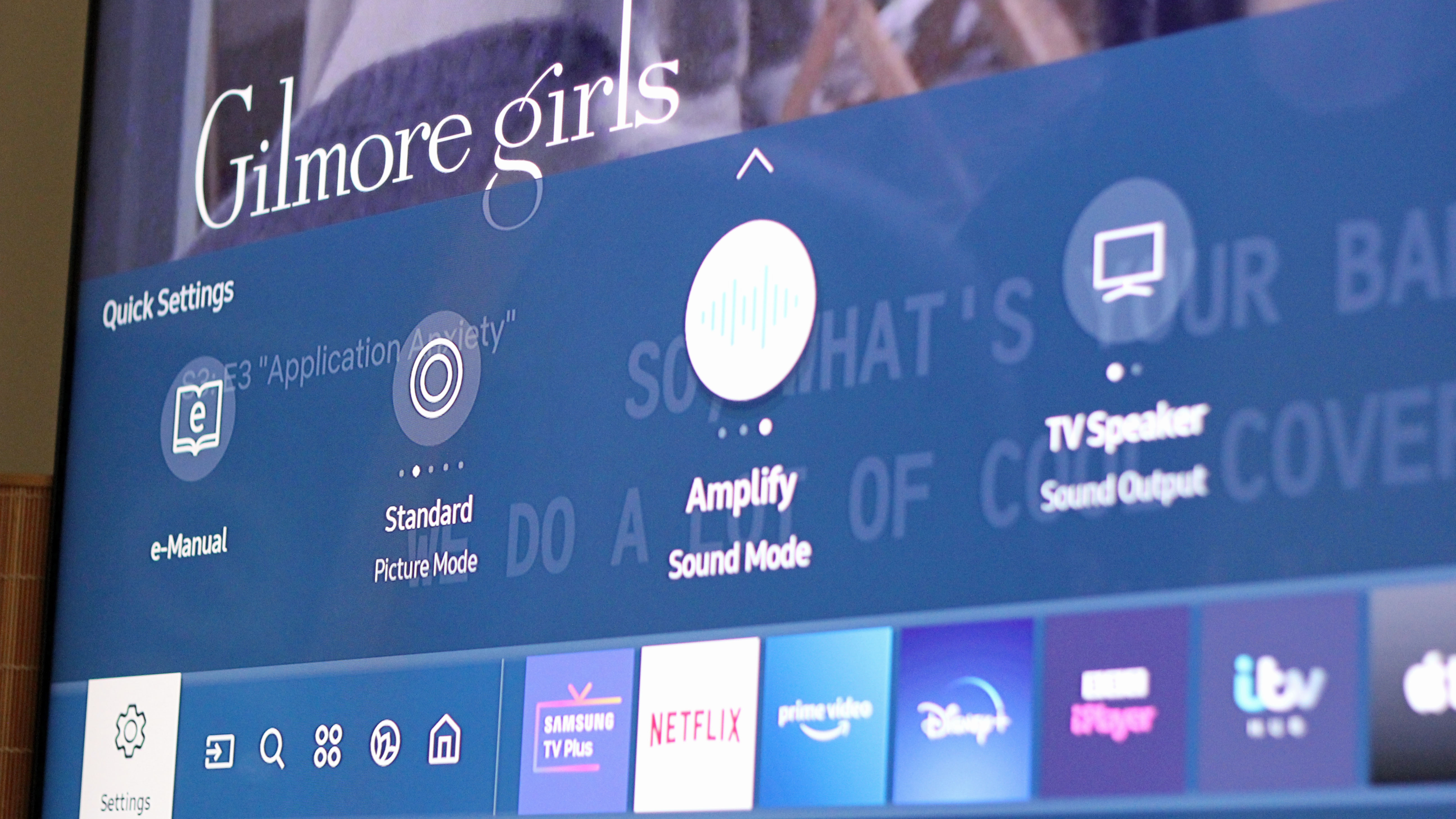
Audio performance
- Medicore sound quality
- Muddy mids
- eARC passthrough for lossless audio
There’s not much to say about the Q60T’s audio performance. It features pretty standard 20W built-in speakers, which will do the job for everyday content but leave a lot to be desired when it comes to action-packed films or orchestral soundtracks.
Samsung QLEDs come with a mix of sound modes that you can try out. There’s Standard, which is the default setting, and Adaptive, which adjusts automatically to the onscreen content. There’s also an Amplify mode that emphasizes dialogue.
When watching an ocean storm rage in Life of Pi, we felt it necessary to use Amplify to ensure that the dialogue could be heard over the chaotic weather – and while the setting works perfectly well, and the audio is general audible, the need for Amplify stems from a lack of clear separation between lows, mids and highs. It’s a far cry from the OTS audio systems of the Q90T or Q950TS, which give a real sense of depth, width and verticality to the sound.
Through the single HDMI 2.1 port, though, you do get eARC, for lossless audio passthrough to a soundbar or external audio setup – and the Q60T is a set that’s crying out for ramped-up audio.
Should I buy the Samsung Q60T QLED TV?

Don't buy it if...
You want Samsung’s cheapest 2020 QLED TV
Samsung knows you want QLED without the QLED price, and that’s what the Q60T offers.
You hate fiddly setups
The Q60T is very easy to set up, with feet inserts that don’t require screws, and most models in the range are relatively light, so it won’t be a burden to lift.
You have a soundbar or home audio setup
The Q60T’s audio leaves a lot to be desired, but its eARC support means you can get lossless audio out of any external audio kit.
Don't buy it if...
You’re a true cinephile
Edge-lighting means that brightness is inconsistent, and fails to get HDR objects really popping.
You’re upgrading from the Q60R (2019)
The Q60T has a cheaper processor than the Q60R, meaning you shouldn’t expect a bump in performance – and the Q60R’s successor this year is technically the Q70T, anyway.
You want smooth action
The Q60T suffers from some mild screen judder, and has a max 60Hz refresh rate rather than the 120Hz of higher-end sets.
- Best TV 2020: the new TVs worth buying this year
from TechRadar - All the latest technology news https://ift.tt/2H4rpQt
via IFTTT


0 التعليقات: